Known and Unknown (107 page)
Authors: Donald Rumsfeld

48
During my early-morning drives to the Pentagon through empty Washington streets in the days after 9/11 I saw how the terrorist attacks gripped the nation and filled the newspapers.

49
(Left to right) Doug Feith, Gen. Jim Jones, President George Bush, Condi Rice, Gordon England, Gen. Hugh Shelton, Gen. Jack Keane, Adm. Vern Clark conferring at the Pentagon the day after 9/11.
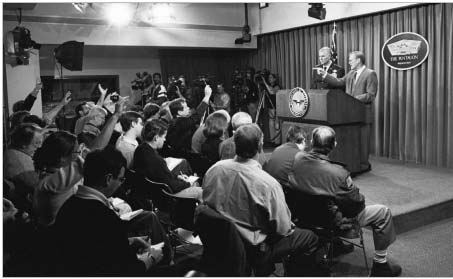
50
Meeting with the Pentagon press in the days after 9/11, Gen. Myers and I responded to hundreds of questions about this new and uncertain conflictâthe first war of the twenty-first century.
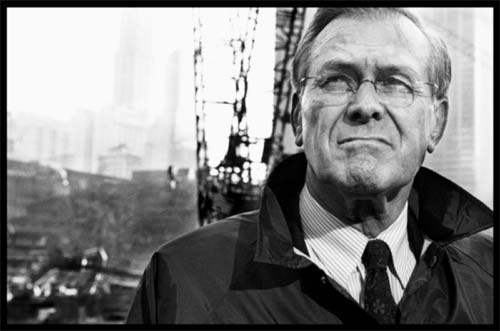
51
Ground Zero, New York City.
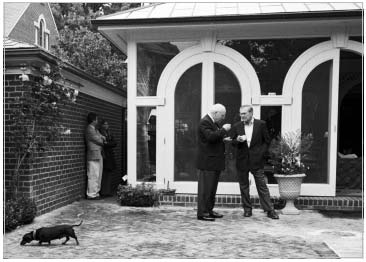
52
With Vice President Cheney while our miniature dachshund Reggie patrolled the area. After 9/11, we were never really off the clock.

53
At a meeting around my stand-up desk in the hours before military action started in Afghanistan with advisers Steve Cambone, Paul Wolfowitz, Larry Di Rita, and Torie Clarke.
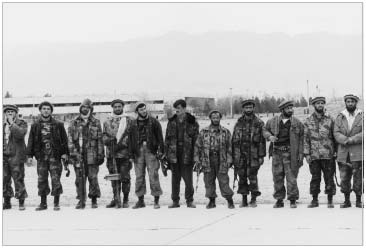
54
Arriving at Bagram Air Base outside Kabul, Afghanistan, in December 2001, we were greeted by a band of haggard but courageous Northern Alliance fighters who had just toppled the Talibanâand by the abandoned wreckage of Soviet-made aircraft.

55
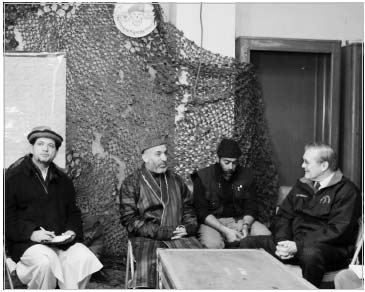
56
During my first visit to Afghanistan I met with the determined leader Hamid Karzai in an abandoned hangar at Bagram Air Base.

57
One of Karzai's challenges was to integrate former Northern Alliance generals such as Ismail Khan into the new Afghanistan. With the assistance of our Afghan-born diplomat Zal Khalilzad he was able to do so, and Khan became an influential provincial governor.
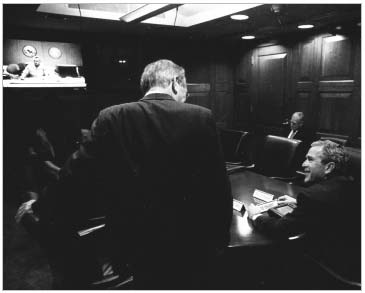
58
During the Afghanistan and Iraq campaigns, those of us meeting in the situation room of the White House could communicate by secure video with commanders around the globeâhere President Bush and I prepare for an update from Gen. Tommy Franks.

59
Arriving at Mazar-e-Sharif, Afghanistan, in 2003. Our country benefited from the close partnership between the then U.S. ambassador to Afghanistan, Zal Khalilzad, and our military commander Lt. Gen. David Barno. They understood the importance of linking American diplomatic and military efforts. Their effective model of cooperation was regrettably not always followed by their successors.

60
In the lead-up to the war in Iraq, President Bush made an effort to invite his combatant commanders along with members of the Joint Chiefs of Staff to the White House cabinet room for face-to-face meetings with their Commander in Chief.
